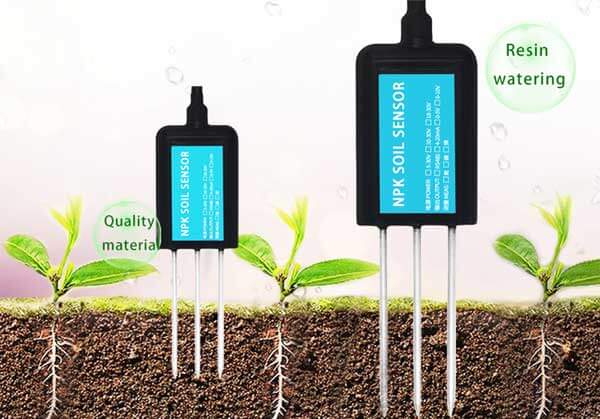The soil is the foundation of agriculture, providing the essential nutrients for plant growth and sustaining life on Earth. However, due to various factors such as climate change, land degradation, and intensive farming practices, soil health and fertility are declining globally. This has led to a growing need for innovative solutions to monitor and manage soil health effectively. One such solution is the use of soil sensors, which can provide real-time data on soil properties and help farmers make informed decisions about crop management. In this article, we will explore the potential of soil sensors in unlocking the secrets of soil health and fertility.

What are Soil Sensors?
Soil sensors are electronic devices that measure physical or chemical properties of the soil. They can be used to monitor various parameters such as moisture content, temperature, pH, electrical conductivity, and nutrient levels. Soil sensors can be classified into two main categories: point sensors and distributed sensors. Point sensors are installed at specific locations in the field, while distributed sensors cover larger areas by using multiple sensors connected in a network.
Advantages of Using Soil Sensors
There are several advantages of using soil sensors in agriculture. Firstly, they provide real-time data on soil conditions, allowing farmers to make timely decisions about irrigation, fertilization, and pest control. This can lead to improved crop yields, reduced water usage, and lower input costs. Secondly, soil sensors can help farmers identify areas with poor soil health or nutrient deficiencies, enabling them to take corrective action before it is too late. Thirdly, soil sensors can provide valuable information for research and development purposes, helping scientists to understand the complex interactions between soil, plants, and the environment.
Applications of Soil Sensors
Soil sensors have a wide range of applications in agriculture. Some of the most common applications include:
Irrigation Management:
Soil sensors can be used to monitor soil moisture content and determine when crops need watering. By providing accurate information on soil moisture levels, farmers can optimize irrigation schedules and reduce water wastage.
Fertilizer Application:
Soil sensors can help farmers determine the optimal time and amount of fertilizer to apply based on soil nutrient levels. This can lead to more efficient use of fertilizers and reduced environmental impact.
Pest Control:
Soil sensors can detect changes in soil chemistry that may indicate the presence of pests or diseases. By identifying potential problems early, farmers can take preventive measures to protect their crops.
Crop Monitoring:
Soil sensors can be used to monitor crop growth and development by measuring parameters such as plant height, leaf area index, and biomass. This information can help farmers assess crop health and make decisions about harvesting and planting.
Soil Health Assessment:
Soil sensors can provide valuable insights into soil health by measuring various physical and chemical properties. This information can be used to develop strategies for improving soil fertility and reducing soil degradation.
Challenges and Future Prospects
Despite the many benefits of using soil sensors, there are also some challenges that need to be addressed. One of the main challenges is the cost of installing and maintaining soil sensor networks. While the cost of sensor technology has been decreasing in recent years, it is still a barrier for many small-scale farmers who cannot afford expensive equipment. Another challenge is the need for standardized protocols for data collection and interpretation. Without clear guidelines, it may be difficult for farmers to make sense of the vast amounts of data generated by soil sensors.
To overcome these challenges
there is a need for collaboration between researchers, farmers, and policymakers to develop sustainable solutions for integrating soil sensor technology into agricultural practice. This could involve developing low-cost sensor technologies, providing training programs for farmers on how to use and interpret sensor data, and creating policies that support the adoption of soil sensor technology in agriculture.

Conclusion
Soil sensors have the potential to revolutionize agriculture by providing real-time data on soil health and fertility. By unlocking the secrets of soil health, farmers can make informed decisions about crop management and improve productivity while reducing environmental impact. However, there are still challenges that need to be addressed before soil sensor technology can be widely adopted in agriculture. With continued research and development efforts, we can expect soil sensors to play an increasingly important role in ensuring food security and sustainability in the future.
